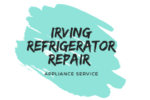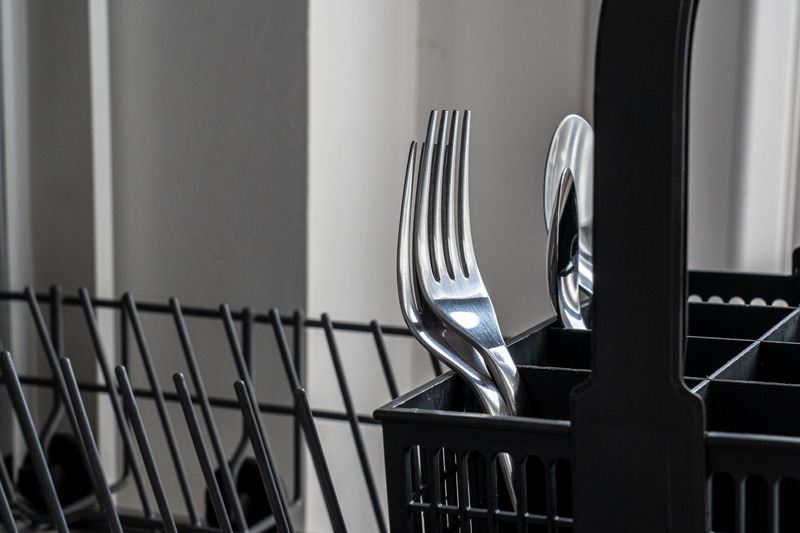A Dishwasher is an invention which saves many hours of our life. Here in this article we discuss some of the kitchen aids we get from dishwasher. How Irving refrigerator repair can help with your dishwasher repair issues. Interesting article in the book called “Repairing Appliances” by “Time Life Books“. Shared here for the benefit of our users.
Unlike some other under-counter kitchen cleaning appliances, such as the garbage disposer and trash compactor, which work on the principle of the chain reaction, the dishwasher is controlled by a central timer that puts it through its paces. This timer commands the dishwasher to perform its four basic tasks: filling with water, spraying dishes to wash or rinse them, draining water out and drying the dishes with heat and circulating air.
When a dishwasher malfunctions, the trouble is often signaled by a failure to perform one of these tasks. Water does not enter the machine, dishes emerge from the appliance dirty, water remains in the bottom of the dishes do not dry. But pinpointing the actual source of the trouble can be difficult.
Most commonly the problem is clogging. If there is no clog, look for a mechanical or an electrical failure. Only then should you check the timer; although the timer makes everything happen, it rarely is responsible for break-downs. Suspect the timer only when the dishwasher does not advance.
A dishwasher that drains poorly is in many cases suffering from a clogged air gap, which is easily cleared. The air gap is a plumbing part—required in many, though not all, local codes—that prevents water in the sink drain from backing up into the dishwasher.
If the air gap is not responsible for the poor drainage, look next at the dishwasher’s pumping mechanism. Occasionally the pump impellers become clogged or broke, so water is not pumped through the spray arms during the wash or rinse cycle, or out during the drain cycle. The pump can be disassembled so that impellers can be replaced.
If the pump motor itself wears out, it too can be replaced. It is usually removed as a unit: Release the clips that lock the motor in place under the tub, and lift it up through the tub. On a few dishwasher models, water is drained not by a reversing pump motor but by a drain valve, this valve may clog or stop working because of an electrical problem. To clear an obstruction, flush the valve with water; for an electrical problem, replace the solenoid that operates the valve. If necessary, the entire valve can be replaced.
When a dishwasher does not clean dishes well, it usually is because the water entering the dishwasher is not hot enough. Check the temperature of the hot water at the sink by running water over a meat or candy thermometer for two minutes; if the thermometer reads less than 140o F., turn the water header’s controls to a higher temperature setting. If this measure fails (which can happen if the hot-water pipes run through unheated parts of the house, such as a crawl space or a basement) wrap the pipes with pipe insulation, available at home-improvement centers.
If water temperature is not the problem , it may be that your detergent is too old, if it dissolves too slowly and leaves a gritty residue when placed it. Sometimes, too , using a different brand of detergent will improve the dishwasher’s performance m, especially in hard-water areas.
If the movement of the spray arms is blocked by debris or improperly arranged dishes, cleaning performance will be poor. Test the action of the arms by closing the dishwasher and running it briefly on the wash cycle, then open the door; if it looks as though the arms have not moved, clean them . If this remedy does not produce clean dishes, disassemble the pump and inspect the upper impeller for teeth that are broken or clogged . Then examine the water-inlet valve . Which may be failing to allow enough water to enter the tub; or a float may be sticking, shutting off the water-inlet value.
Finally, poor cleaning may be the result of low water pressure in the house water lines. Since the timer lets hot water into the dishwater for a present period of time, less water enters the machine when the pressure is low. To the test the water pressure, turn on the dishwasher and let it fill. Then siphon out the water into containers; there should be 21/2 U.S. gallons . If water pressure is the problem , run the dishwasher only when no water is being used else-where in the house.
When a dishwasher does not run at all the trouble may be simply a defective door latch or switch. If the dishes do not dry well, check the heating element or, in a model that has one, the blower.
Dishwashers can leak either through a slipped or worn gasket or through poor hose connections and pump seals. Reseat a slipped door gasket with a screwdriver or a pair of pliers. Replace a worn gasket by following the manufacture’s instructions for inserting a new one . To trace hose leaks, observe the character of the water. Clear water indicates a leak during the fill cycle, which means a faulty hose connections at the water-inlet valve . Sudsy water is a sign of leaks during the wash, rinse or drain cycles, from hose connections at a pump or, in a mode that has one , the drain valve. If a hose is simply loose, tighten or replace its clamp if it is cracked or brittle, replace the entire hose assembly.
Before attempting any repair on a dish washer, turn off the power to the machine at the house service panel. To word on parts located on the underside of the tub-the water-inlet valve, drain valve, pump motor, float switch or pressure switch, heating element or blower-unscrew the lower access panel. Before removing a water-inlet valve, shut off the hot-water supply valve at the water heater . To replace a faulty detergent dispenser, unscrew and remove the panel on the front of the door; to service the timer remove the control panel over the door.
Continue reading about “Dishwasher not Draining?”


